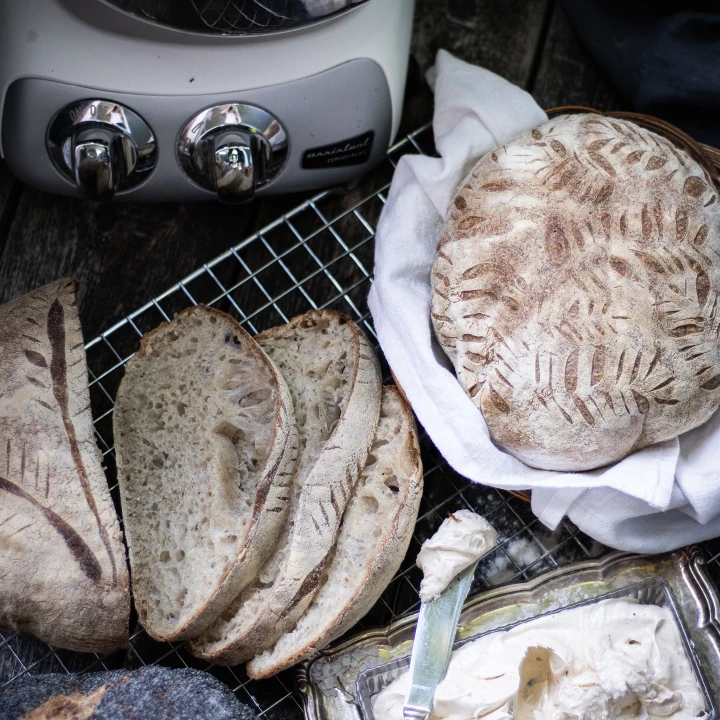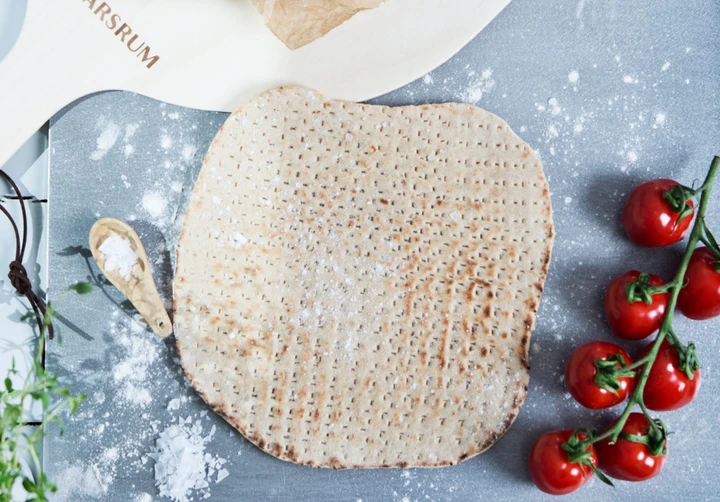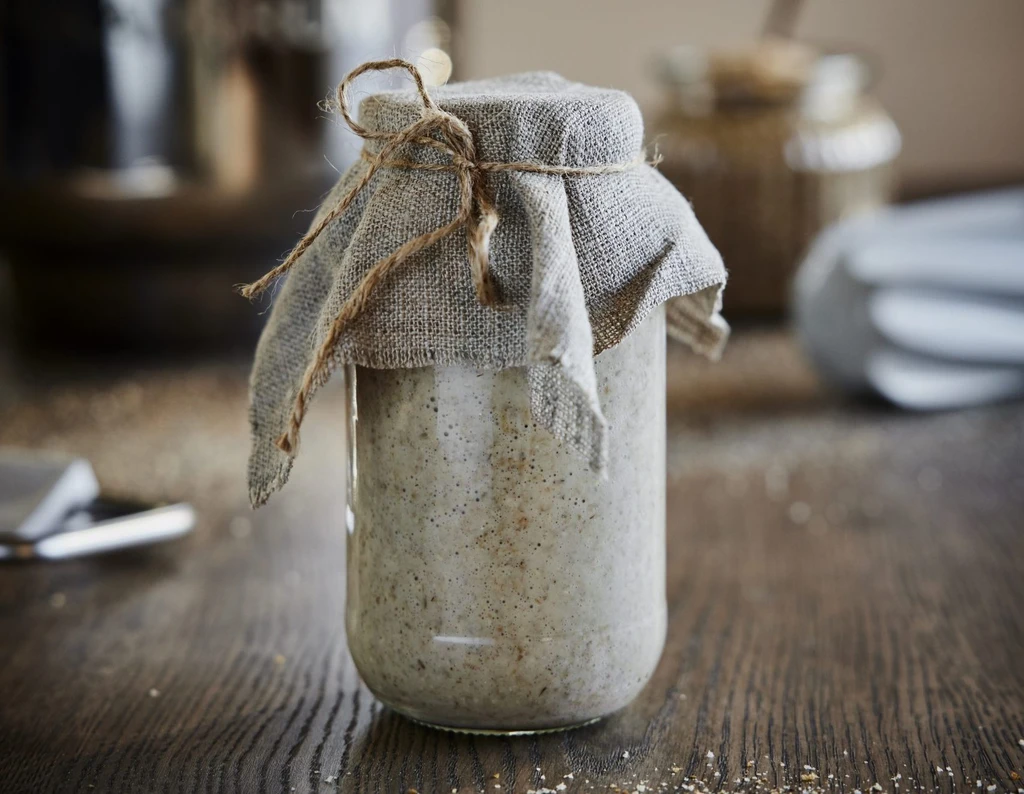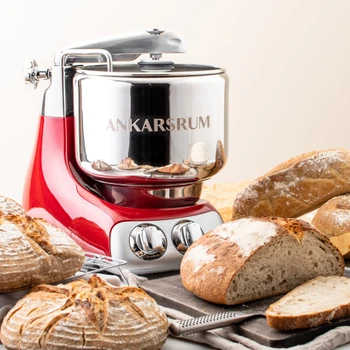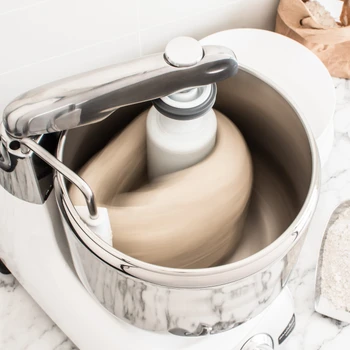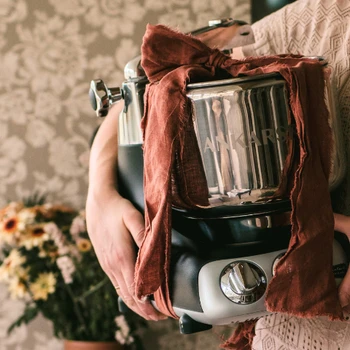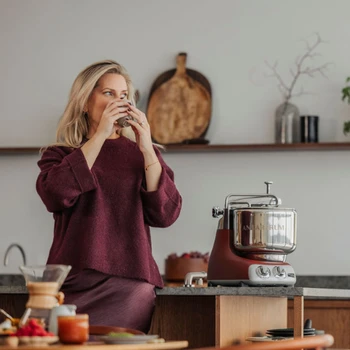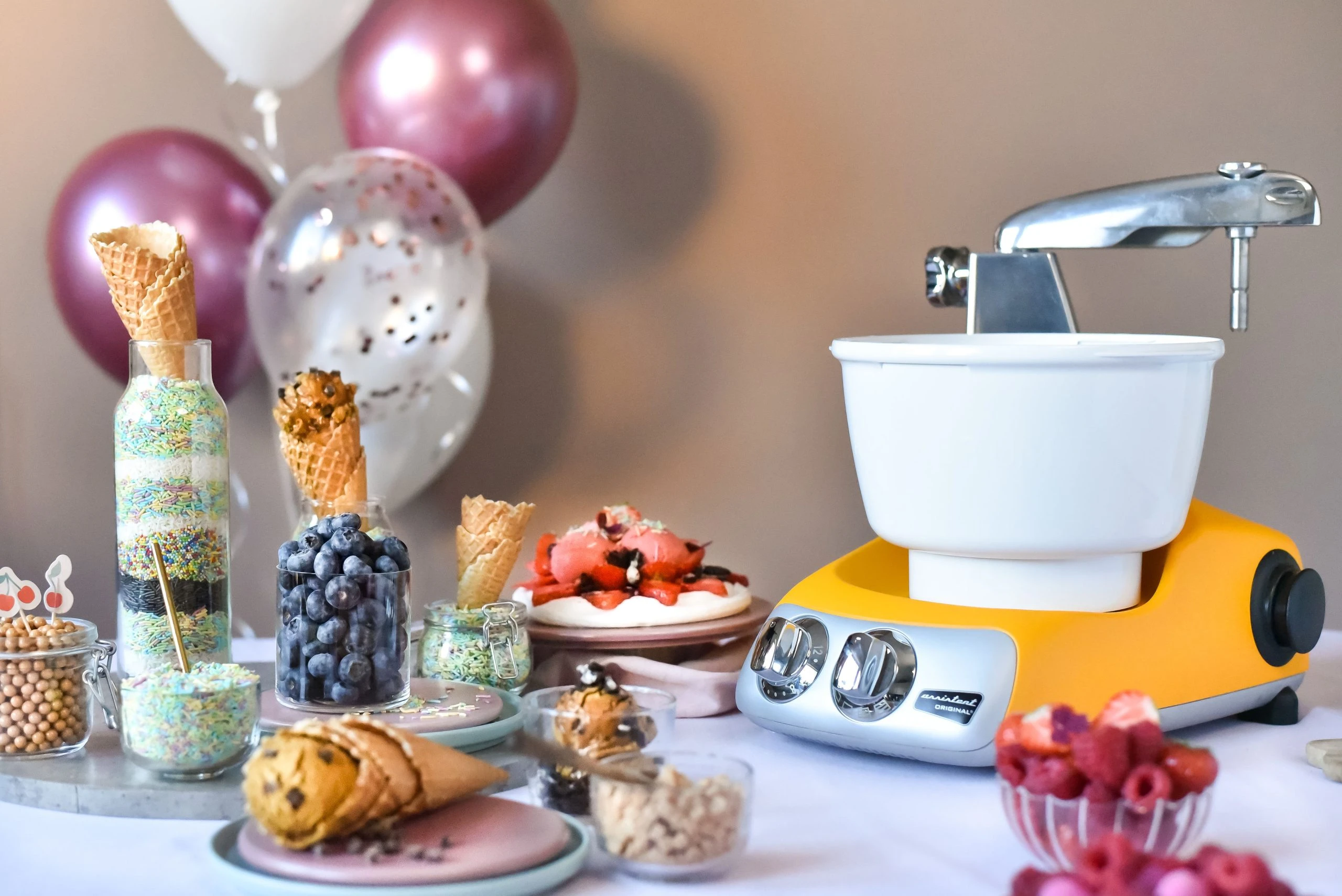What is a sourdough starter?
A sourdough starter is two ingredients – flour and water, and it’s used instead of yeast or in combination with yeast.
It’s a fermentation culture used in bread baking for making the dough rise naturally, imparting a tangy flavor, and creating structure. It also helps break down gluten and starch, making the bread more digestible. A deliciously good sourdough bread has an airy and chewy internal structure.
What is the best way to store a starter?
A clean glass jar with a lid is optimal for storage. For regular bakers, keeping it in warm place on your kitchen countertop will work. If you don’t bake regularly, then it’s best to store it in the refrigerator.
What type of flour should I use?
You can make your sourdough starter from your favorite of all-purpose or bread flour, or even a combination of different flours.
How do I begin my first starter?
We have an easy-to-follow basic sourdough starter recipe (link to the recipe below). Our recipe calls for feeding the starter about five days before baking can begin.
How to feed my sourdough?
When feeding your sourdough starter, take about 80% of the starter and discard, keeping 20%. Feed this with equal parts water and flour—exact amounts aren’t critical, as long as the water and flour are in roughly equal weight. The mixture should feel like a thicker pancake batter.
Once the sourdough doubles in size, it’s ready for baking. If your starter sinks, you’ve waited too long, so you’ll need to feed it again and wait until it doubles.
When ready to bake, take the needed amount for the dough, according to the recipe, and feed the remaining starter immediately to keep it active.
How often do I feed my sourdough?
This depends on how you store the start. On the kitchen counter, we’d suggest feeding it every day or every other day. If stored in the refrigerator, once a week is sufficient. Take it out, feed it as usual, and put it back in the refrigerator.
Is my sourdough starter still active?
To check if the sourdough is still active, drop a spoonful into a bowl of lukewarm water. If it floats, it’s ready to be used in dough. If it sinks, wait another day or continue feeding. The sourdough starter should be at room temperature when you’re ready to incorporate it into the dough.
Patience
You’ll need patience when learning to bake with sourdough. A basic starter can take 5 days before it’s ready, and you may find other resources that state it may take a few weeks to develop a strong and stable sourdough starter. With any sourdough starter, it may initially be unstable, but over time it will become more reliable and productive.
Can I buy a sourdough starter?
Yes, you can check with your local bakery about purchasing a sourdough starter, and we’d suggest feeding it a few times before you bake with it for the first time. You can also find pre-made sourdough starter online.
Fold the sourdough to create the perfect bread
Folding the sourdough is a crucial technique in sourdough bread baking that develops the bread’s structure, enhances flavor, and promotes fermentation. When you fold the sourdough, you introduce oxygen into the dough, benefiting the yeast and lactic acid bacteria responsible for fermentation and flavor development.
Start your sourdough starter
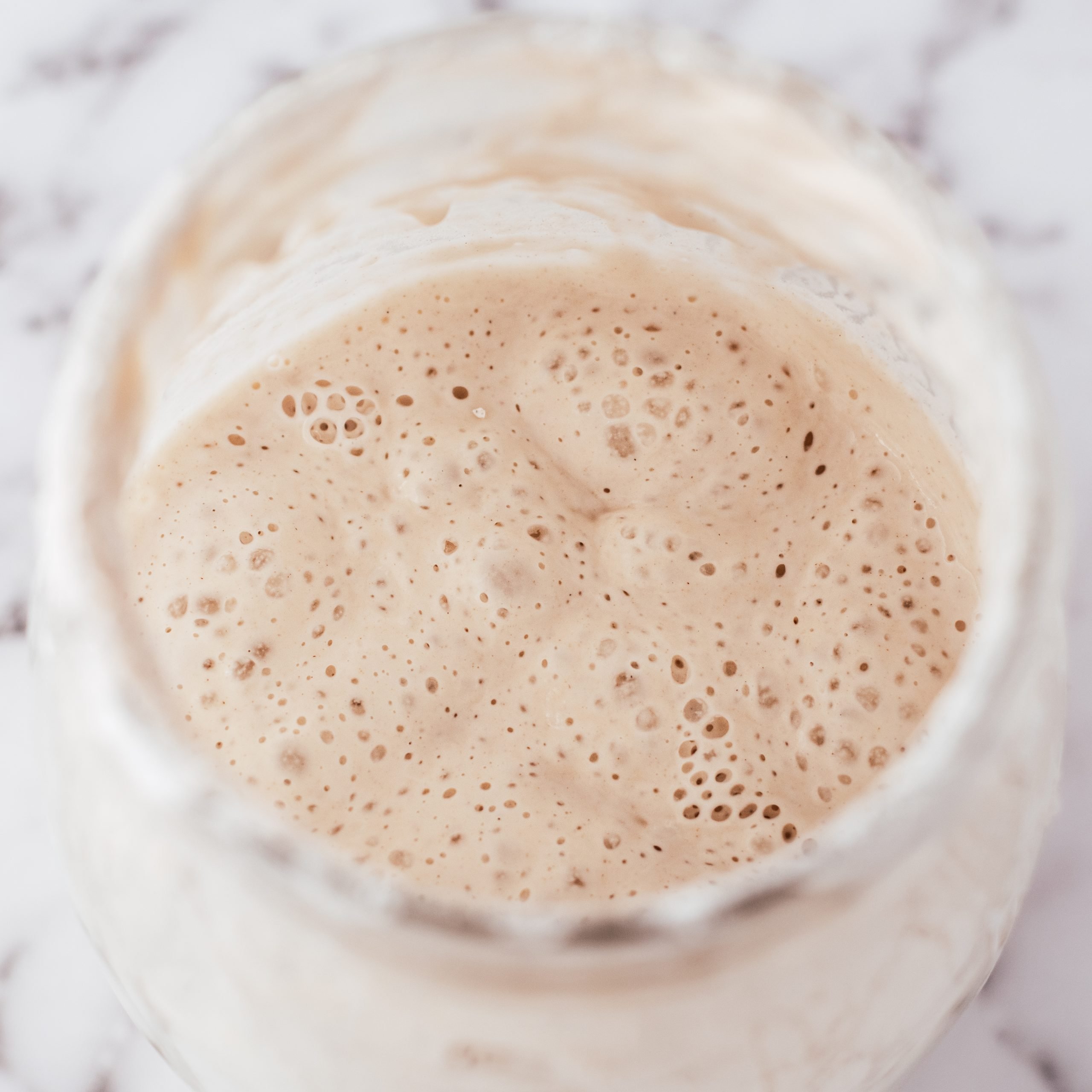
Sourdough starter
100 ml water (40 degrees celsius), 100g (x2)
30 g all-purpose flour, 30g (x2)
Day 1
Stir 100 ml water with 30 g flour in a clean glass jar with a snap lid, close the lid. Place the sourdough starter in a place in the kitchen where it is not too cold (for example on top of the refrigerator)
Day 2 & 3
Remove the lid and stir morning and evening, do not close the lid completely.
Day 4
Remove the lid and stir. Pour out almost all of the sourdough base but save what is left in the bottom of the jar and on the edges. Feed with 30 g flour and 100 ml water (40 °C / 100 °F), stir. Let the lid sit loosely on the edge.
Day 5
Now the sourdough base should be bubbly, doubled in size and ready to bake. If the sourdough base is not bubbly, leave it for another day or place in a warmer spot.
Rye sourdough bread
Use your sourdough for a simple rye sourdough bread.
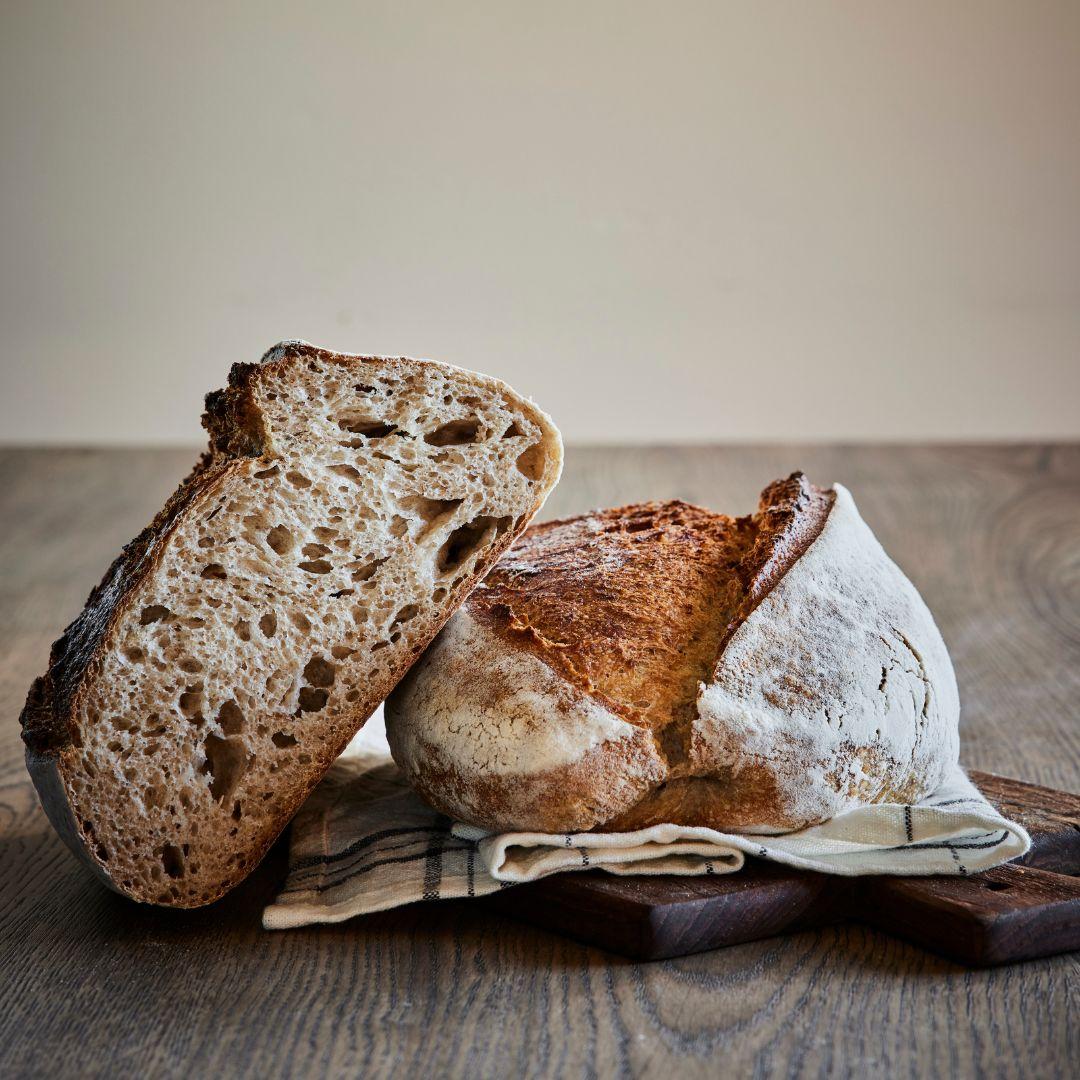
Ingredients
280 g all-purpose flour
120 g rye flour
300 ml water, 300g
80 g room temperature sourdough starter (recipe above)
2 tbsp honey
2/3 tbsp sea salt
50 g olive oil to the pan where the sourdough is folded and fermented. You can also use an ovenware and plastic wrap.
Follow these steps
- Assemble Ankarsrum with Bowl, Dough Knife and Dough Hook. Add water into the bowl, add the sourdough starter and run at low speed. Add all-purpose flour, rye flour, salt and honey, run on low speed until the dough has just come together. Put on the Bowl cover and let the dough rise for about 60 minutes.
- Grease the bottom of a plastic box with olive oil and pour over the dough, lift the dough in each corner and fold over the dough towards the middle. Put the lid between each fold and repeat the folding three times at 30 minute intervals. Leave to ferment for about 4 more hours with the lid on, until double in size. Total fermentation time about 4 – 6 hours.
- Pour the dough onto a lightly floured baking sheet paper, use a dough scraper to avoid smudges. Sprinkle some flour on the dough. Pull a little in a corner of the dough and fold it towards the edge, press a little in the middle and turn the dough 45 degrees. Repeat until your dough feels taut. Turn the dough so you get the work on the underside, flour and let rest under a kitchen towel for about 30 minutes.
- Now you should shape into a loaf, flatten the dough a little lightly with floured hands. Fold in four corners towards the middle and press, then fold one edge towards the other. Transfer the dough to a floured oblong leavening basket. Remember to place the underside with the fold upwards in the basket, pinch the fold a little with your fingers. Cover with a kitchen towel and leave to rise in the fridge overnight.
- Set the oven to 270 °C (520 °F) hot air and place the Baking Steel in the middle of the oven. Flour the baking spatula and place the bread on the spatula, brush off excess flour and make a cut over the bread on one side. Slide the bread onto the Baking steel and bake at 270 °C (520 °F) for about 15 minutes, then lower the heat to 225 °C (440 °F). Bake until the bread has an internal temperature of about 96 – 98 °C (204-208 °F), about 30 more minutes. Take out the bread and let it cool on a wire rack, the bread needs to rest for about 60 minutes before you cut it.
RECIPE WITH SOURDOUGH
Sourdough Bread with Whipped Browned Butter
